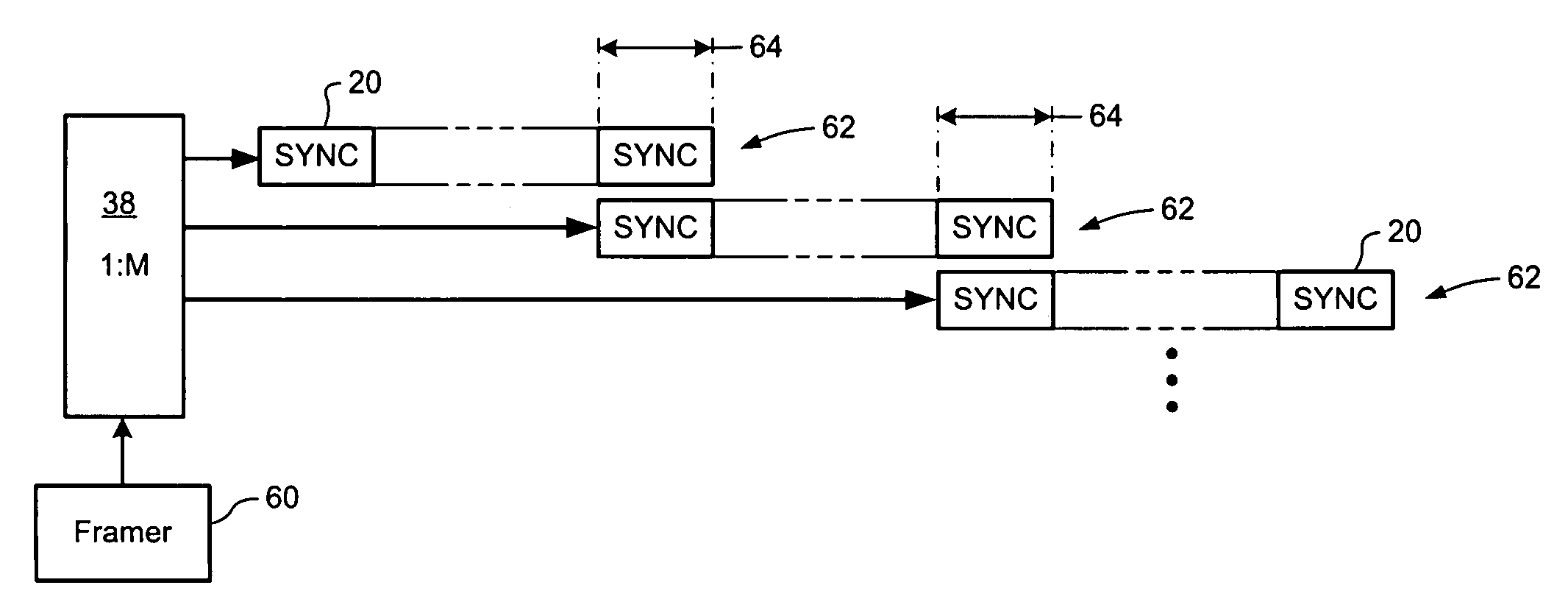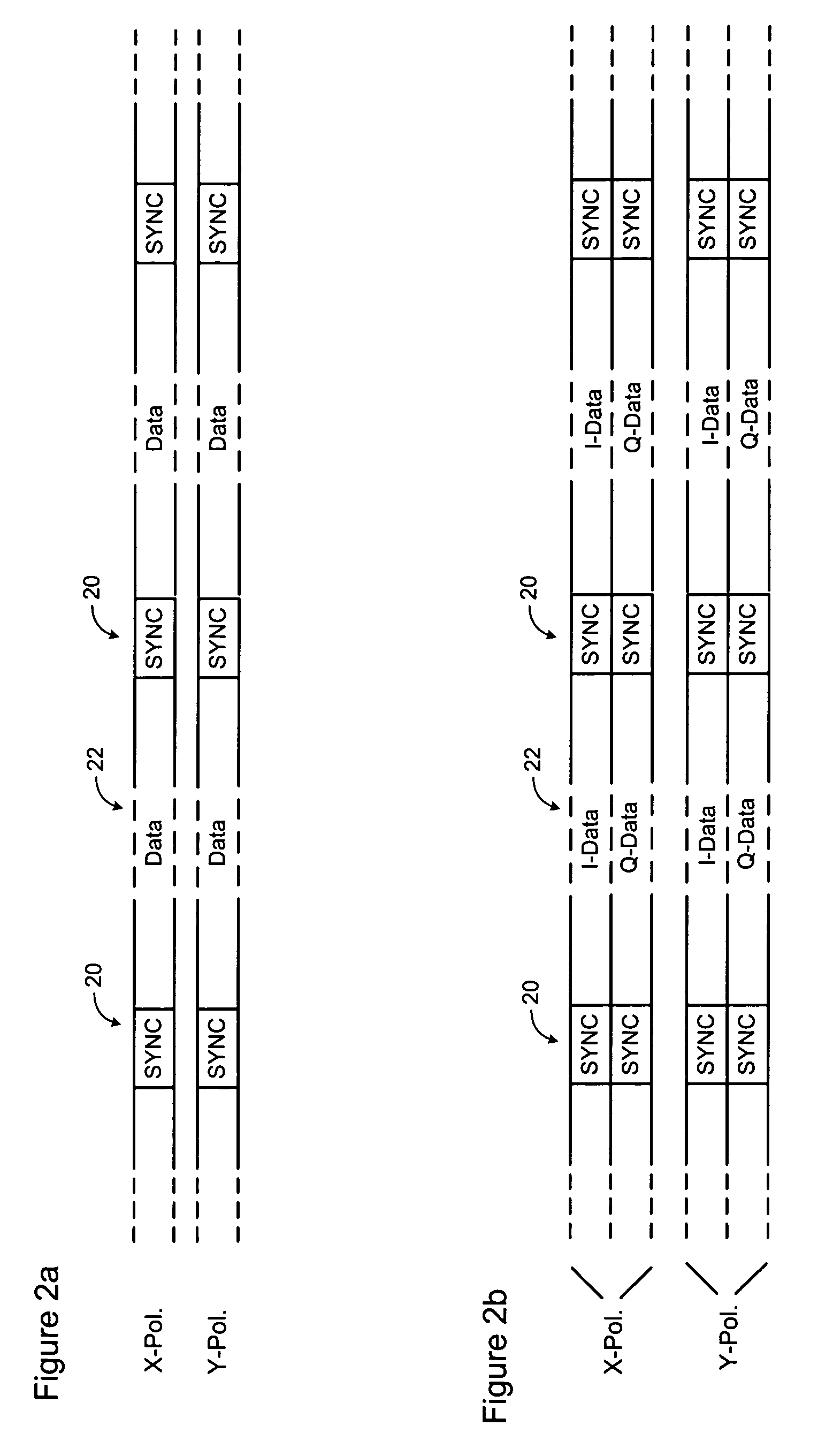Efficient data transmission and training of data processing functions
a data transmission and data processing technology, applied in the field of optical communication networks, can solve the problems of preventing successful deployment in “real-world” installed communication networks, distorted optical signals received through conventional optical links, and significant amounts of chromatic dispersion (cd) in optical signals, and achieves cost-effective and efficient data transmission.
- Summary
- Abstract
- Description
- Claims
- Application Information
AI Technical Summary
Benefits of technology
Problems solved by technology
Method used
Image
Examples
Embodiment Construction
[0028]The present invention provides methods and techniques that enable efficient data transmission in an optical network, with cost-effective signal processing in a receiver unit. Embodiments of the present invention are described below, by way of example only, with reference to FIGS. 2-7b.
[0029]In general, the present invention provides a system in which periodic SYNC bursts are transmitted through an optical link and used in a receiver to enable efficient receiver training and data recovery. The format, content and repetition rate of the SYNC bursts is selected to facilitate detection even in the presence of significant impairments, while minimizing overhead. For example, in some embodiments, the overhead associated with the SYNC bursts is on the order of 3%. As a result, the performance penalty associated adding the SYNC bursts to the optical signal (and / or the loss of receiver sensitivity resulting from increasing the symbol rate of the optical signal to compensate for the add...
PUM
 Login to View More
Login to View More Abstract
Description
Claims
Application Information
 Login to View More
Login to View More - R&D
- Intellectual Property
- Life Sciences
- Materials
- Tech Scout
- Unparalleled Data Quality
- Higher Quality Content
- 60% Fewer Hallucinations
Browse by: Latest US Patents, China's latest patents, Technical Efficacy Thesaurus, Application Domain, Technology Topic, Popular Technical Reports.
© 2025 PatSnap. All rights reserved.Legal|Privacy policy|Modern Slavery Act Transparency Statement|Sitemap|About US| Contact US: help@patsnap.com



